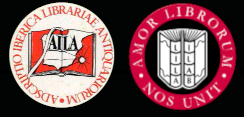


Home |
Temáticas |
Catálogos |
Pedidos |
  |  |
|||||||
|

|
RUGENDAS. (Johann Moritz) HABITANTE DE GOYAS, QUADRO A ÓLEO PINTADO SOBRE MADEIRA. |
|
|
Clique nas imagens para aumentar. STADEN. (Hans) e Johann Dryander. Hans Staden van Homborgs Beschryvinghe van America/ wiens Inwoonders / Wildt / Naekt / seer Godloos / ende wreede Menschen-Eeters zijn; hoe hy selve onder de Brasilianen lange gevangen geseten heft / die hem dagelijcks dreyghden doodt te slaen en t'eeten: Oock hoe wonderbaerlijck hy door de handt des Heeren verlost is. Item / hoe de wilden Wayganna geheeten / hun daer / als onder 't gebergte de Bay de Todos los Sanctos onthouden ende geneeren / voorts waer mede sy omgaen ende Oorloge voeren. Alles Figuerlijck naer't leven af gebeelt, is seer dienstig voor de gene die naer Brasilien of Farnambucque varen. t’Amsterdam, Gedruckt hn Jan Jacobfz Bouman, op’t Water tegen ober de Roozen Marcht […] Anno 1660. In 4º (de 18x14,5 cm) com [viii], 72 págs. Encadernação recente inteira de pele com gravação a ouro na lombada. Ilustrado com gravuras no texto abertas a talhe-doce. Edição holandesa extremamente rara de um importante e muito popular relato de uma testemunha ocular sobre o Brasil do século XVI, por Hans Staden (ca. 1520/25-ca. 1557 ou ca. 1576), artilheiro de Hesse que serviu os portugueses no Brasil nos anos 1547-1548 e 1549-1555. Durante a maior parte de sua segunda viagem ao Brasil, foi mantido prisioneiro perto do Rio de Janeiro pelos índios Tupinambá. Já fluente na língua tupi, terá provavelmente adquirido um conhecimento mais íntimo dos índios do que qualquer outro escritor de sua época. A primeira parte descreve suas viagens e captura pelos índios, enquanto a segunda parte a cultura e costumes destes. Conseguiu sobreviver e voltar são e salvo à Europa, resgatado pelo navio corsário francês Catherine de Vatteville, comandado por Guillaume Moner. Os contos sensacionais de Staden sobre os 'canibais selvagens, nus, muito ímpios e cruéis' do Brasil, publicados quando os europeus quase nada conheciam do Novo Mundo, imediatamente fizeram do livro um best-seller. Embora sua visão tendenciosa dos “selvagens” brasileiros tenha sido a progenitora de muitas crenças europeias amplamente aceites no século XVI sobre o Novo Mundo, ela também contém muitas informações provenientes das observações diretas de um observador participante, familiarizado com a língua nativa. Portanto, constitui uma das fontes mais importantes de factos e observações sobre os indígenas locais. Andres Kolben, em Marburg, publicou pela primeira vez o livro de Staden em alemão em 1557, mas Christoffel Plantin em Antuérpia publicou uma tradução holandesa ilustrada com 22 xilogravuras em 1558 e o livro tornou-se ainda mais popular em holandês do que em alemão, existindo cerca de vinte edições holandesas, quase todas muito raras. A presente edição segue as edições de Broer Jansz de 1627 e posteriores (provavelmente também sua edição de 1625, que não vimos) página por página e quase linha por linha, tem o mesmo agrupamento (A-K4 = 40 ll.), e usa as mesmas xilogravuras (às vezes com danos nítidos). As 17 ilustrações em xilogravura no texto estão tão próximas (mesmo nas letras) de 17 das 22 da edição de 1558 de Plantin, que suspeitamos que elas tenham sido impressas com os seus blocos. Plantin incluiu mais cinco, não nesta ou nas edições Broer Jansz, mas as duas xilogravuras maiores nas duas páginas de rosto não têm imagem correspondente na edição de Plantin e provavelmente foram cortadas para Broer Jansz, embora o texto esteja dividido em duas partes e a parte dois tenha a sua própria página de título, essa página de título fica no meio de um caderno (H3) e as assinaturas e paginação dos cadernos continuam por todo o livro, portanto as duas 'partes' não podem ter sido emitidas separadamente. O STCN registra nove edições holandesas, a maioria em apenas uma ou duas cópias cada, mas nenhuma entre 1638 e 1685. Localizamos apenas outras três cópias da presente edição em todo o mundo. Existe uma versão portuguesa do texto de Marburgo de 1557, por Alberto Löfgren, revista e anotada por Theodoro Sampaio, e publicada no Rio de Janeiro em 1930, com as xilogravuras inseridas nos locais correspondentes do texto, que celebrizaram a obra ilustrando os relatos sobre antropofagia. Sabin, Borba de Moraes ou J. C. B. não referem esta edição.
Binding: Recent full calf with gilt tools on spine. Illustrated with engravings from intaglio printing plates. Extremely rare Dutch edition of an important and very popular eye-witness account of mid-16th-century Brazil, by Hans Staden (ca. 1520/25-ca. 1557 or ca. 1576), a Hessian artilleryman who served the Portuguese in Brazil in the years 1547-1548 and 1549-1555. During most of his second trip to Brazil he was held prisoner near Rio de Janeiro by the Tupinambá Indians. Already fluent in the Tupi language, he probably gained a more intimate knowledge of the Indians than any other writer of his day. The first part describes his voyages and his capture by the Indians, while the second part describes their culture and customs. He managed to survive and return safely to Europe, rescued by the French privateer Catherine Vatteville, commanded by Guillaume Moner. Staden’s sensational tales of the “savage, naked, very godless and cruel cannibals” of Brazil, published when Europeans knew almost nothing of the New World, immediately made the book a best-seller. While its biased view of the Brazilian “savages” was the progenitor of many widely accepted 16th-century European beliefs about the New World, it also contains a wealth of information from the direct observations of a participant observer familiar with the native language. It therefore forms one of the most important sources of both facts and misperceptions about indigenous Americans. Andres Kolben at Marburg first published Staden’s book in German in 1557, but Christoffel Plantin in Antwerp published a Dutch translation illustrated with 22 woodcuts in 1558 and the book became even more popular in Dutch than in German, going through about twenty Dutch editions, nearly all very rare. The present edition follows the 1627 and later Broer Jansz. editions (probably also his 1625 edition, which we have not seen) page for page and nearly line for line, has the same collation (A-K4 = 40 ll.) and uses the same woodcuts (sometimes with clear matching damage). The 17 woodcut illustrations in the text are so close (even in their lettering) to 17 of the 22 in Plantin’s 1558 edition that we suspect they were printed from Plantin’s blocks. Plantin included 5 more not in this or the Broer Jansz editions, but the two larger woodcuts on the two title-pages have no corresponding image in Plantin’s edition and were probably cut for Broer Jansz. Although the text is divided into two parts and part two has its own title-page , that title-page falls in the middle of a quire (H3) and the quire signatures and pagination continue through the whole book, so the two “parts” could not be separately issued. The STCN records nine Dutch editions, mostly in only one or two copies each, but none between 1638 and 1685. We have located only three other copies of the present edition worldwide./p> There is a Portuguese version of the 1557 Marburg text by Alberto Löfgren, revised and annotated by Theodoro Sampaio, and published in Rio de Janeiro in 1930, with the inserted woodcuts in the corresponding places in the text, illustrating the reports of anthropophagy. Unknown edition, not mentioned in Sabin, Borba de Moraes or J. C. B. Referência: 1404JC122
Local: M-18-D-6 Caixa de sugestões A sua opinião é importante para nós. Se encontrou um preço incorrecto, um erro ou um problema técnico nesta página, por favor avise-nos. 
|
Pesquisa Simples




|
||
 |
|||
|